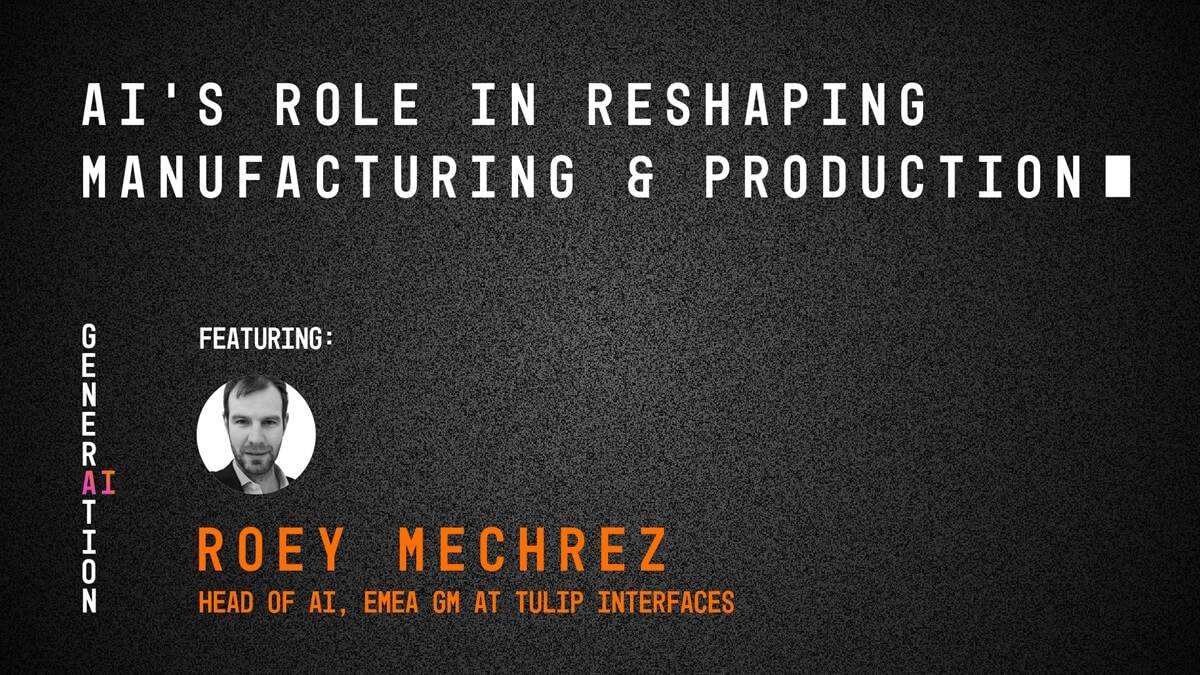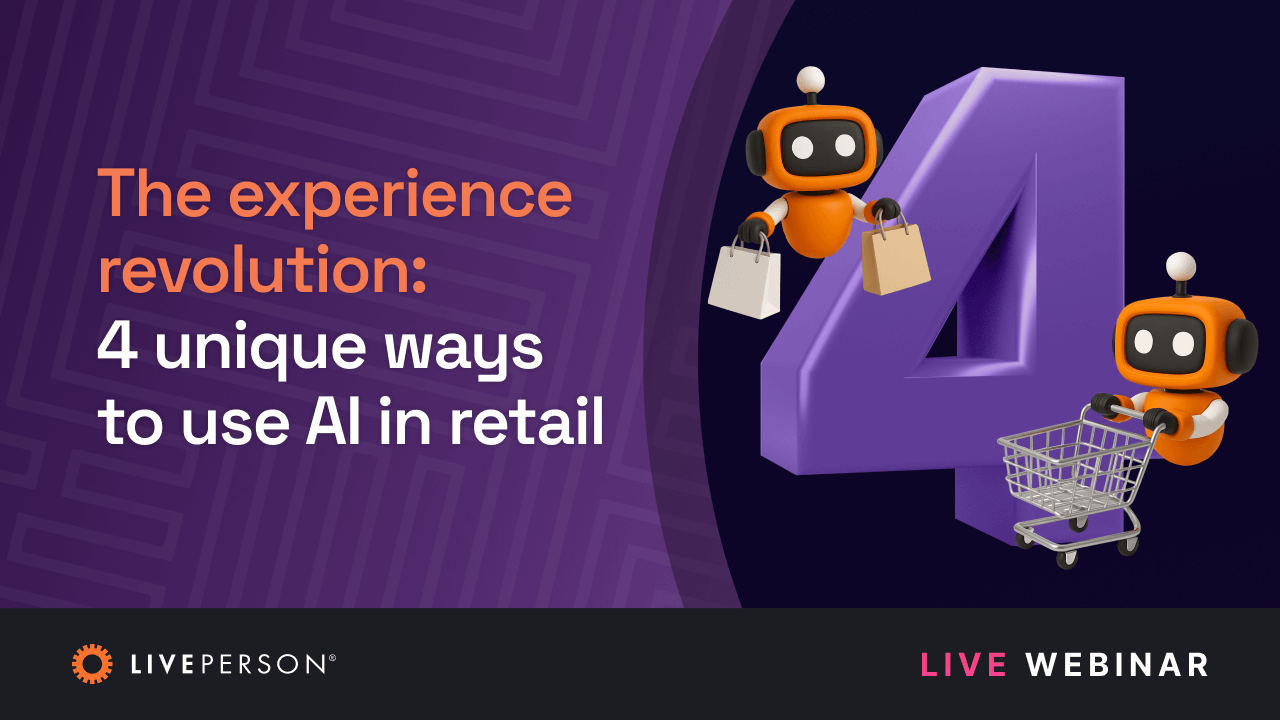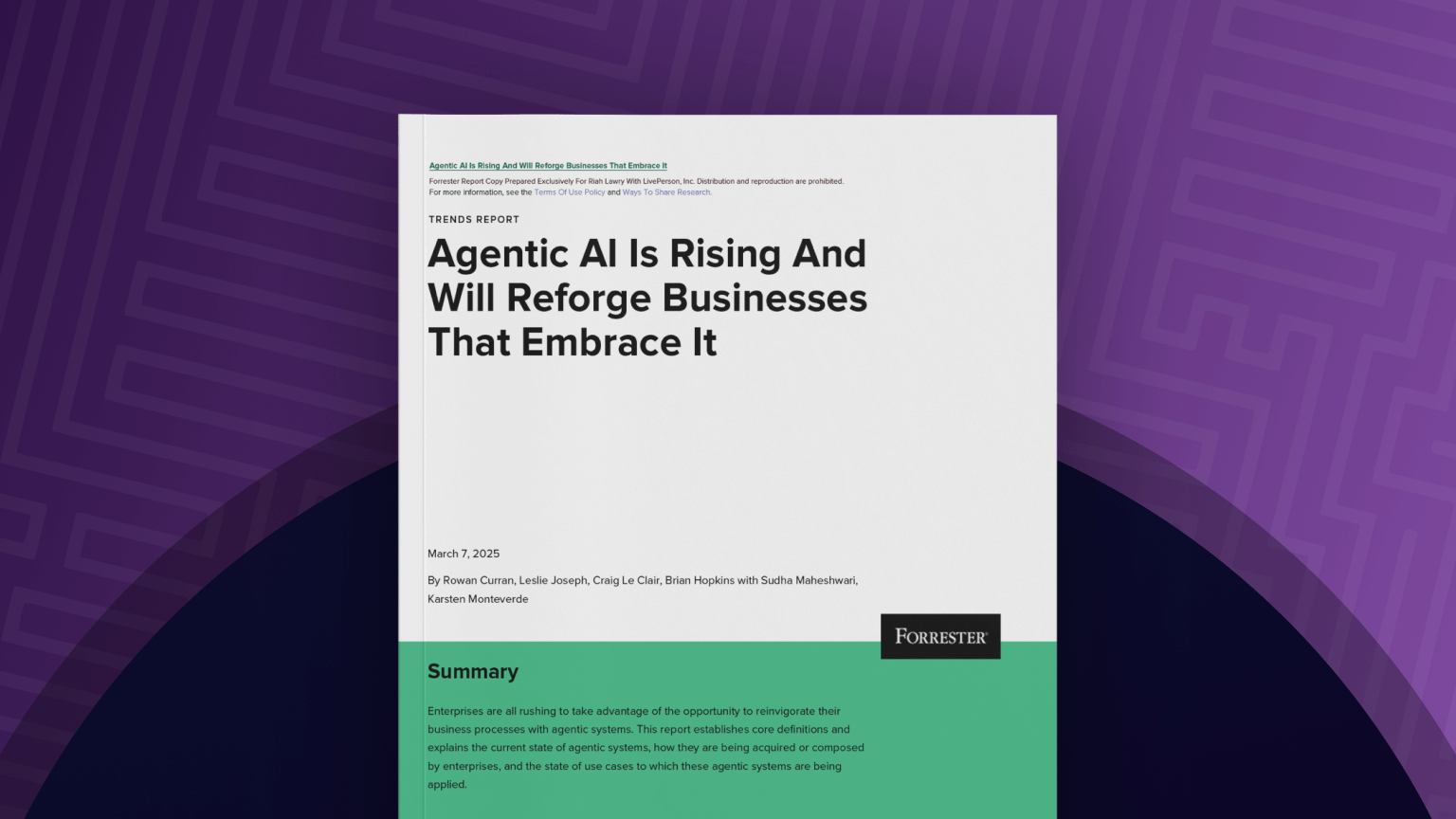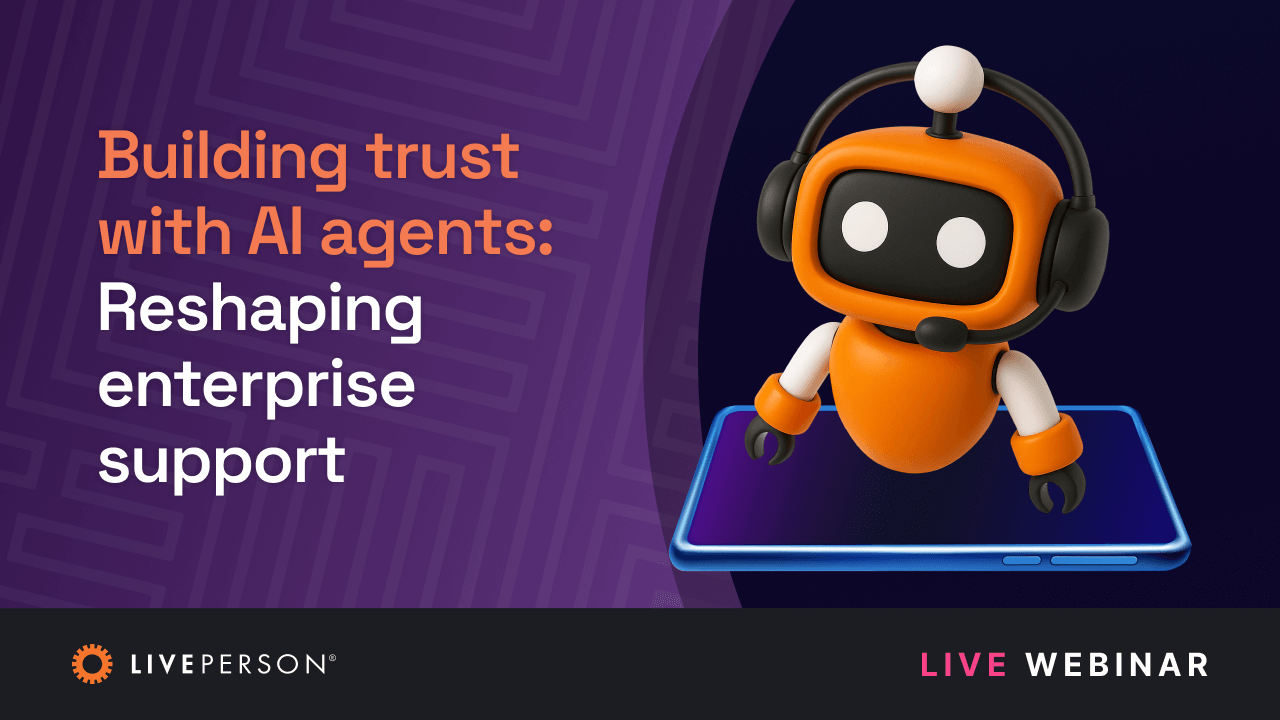PODCAST OVERVIEW
Unlocking efficiency: AI in manufacturing
The latest Generation AI podcast discusses how artificial intelligence in the manufacturing industry (and beyond) can augment people’s roles
December 11, 2023 • 5 minutes

After causing waves across the internet over the past year, artificial intelligence (AI) isn’t just shaping the tools people use in their day-to-day — it’s shaping how we do business.
From automation to generative AI and increasingly adept AI chatbots, AI has applications far beyond what many assume. While the use cases may be crystal clear in applications like marketing and sales, AI technology is also actively shaping industries like manufacturing.
Dr. Roey Mechrez, Head of AI, EMEA GM at Tulip Interfaces, joins our Generation AI podcast to discuss how a 9-year-old company, founded by graduates of the MIT Media Lab, is using a no-code platform to revolutionize shop flow operations and empower frontline human workers with AI tools.
Addressing manufacturing industry challenges through a no-code platform and democratization of AI
Tulip Interfaces was founded around the concept of human-machine interaction — the core of manufacturing. About 20% of the world is made up of people who work hands-on in shops and manufacturing plants, interacting with the physical world daily.
Tulip brings a no-code operation platform that allows frontline operators to develop applications to optimize shop flow. From automation to digitalization of the production process and factory floor, this platform further increases accessibility and customizability, ensuring manufacturing companies everywhere run far more smoothly.
“With a mindset of no code, the idea is everyone — engineering, manufacturing — can go and practice digitalization,” Dr. Mechrez says. “You don’t need sophisticated IT teams to go and build these digital assets, you can do it by yourself.”
While the platform itself offers highly sophisticated applications for advanced manufacturing technologies, its core function is to help streamline frontline manufacturing operations.
What generative AI means for today’s enterprises and workforce
While machine learning algorithms still play a significant role in technology and innovation development, generative AI, in many ways, has replaced traditional machine learning in several ways. Whereas the war for talent waged in previous years as companies scoured for the best researchers, engineers, and developers, generative AI somewhat levels the playing field.
“Today, it’s not about the best research, best technology, and best engineers, it’s more about going back into the product,” Dr. Mechrez says. “Of course, you need good engineers, but you also need good products and good ideas — not necessarily the best researchers in the world.”
According to Dr. Mechrez, that was only the first wave. Now, we’re experiencing the second — where those who build AI solutions aren’t even machine learning engineers or software engineers. You no longer need to understand how to train the back end of foundational models. You can use large language models instead.
A paradigm shift that sparked acceleration
With accessibility increasing, more exciting developments have come from the world of AI, automation, and technology. By inviting more people to collaborate, bring their ideas to life, and work on these developments, innovators are changing the world with applications.
“Because of that paradigm shift, we see acceleration,” Dr. Mechrez says. “The speed is crazy.”
The democratization and proliferation of AI-based product development has made it in some ways, table stakes for companies. Whereas a handful of companies are developing large language models, thousands are leveraging those models to develop their own technologies.
Smart factories = Job trajectory augmentation — not replacement
Before electricity, there were countless important roles people played, from morning wakeup calls to lighting and extinguishing lamps. These roles all but became valueless after the widespread use of electricity.
But the job market didn’t plummet — it shifted. Manufacturing AI and automation will result in the same sort of shift, according to Dr. Mechrez. While some jobs may lose value, others will open. People must be willing and able to shift with the market. But this is nothing new.
“I mainly believe in augmenting people, I think that’s what AI is doing,” Dr. Machrez says.
Roles that embrace AI for the better won’t see complete replacement by the technology, but rather a shift in focus in time, attention, and training. Dr. Mechrez offers the example of radiologists. Where AI is now playing a significant role in medical imaging, doctors are able to place their focus on more sophisticated challenges. Likewise, automating systems in supply chain management, assembly lines, quality control, and other parts of the manufacturing process will do the same — augment roles, not replace them.
“ When the term Industry 4.0 was created, people were imagining factories with only robots, no people,” Dr. Mechrez says. “That’s so far from reality. The amount of human labor needed to produce almost everything is huge.”
The future of AI — practical applications
Many were skeptical about AI during this year’s hype. While businesses everywhere were interested in cost-effective solutions, many didn’t pull the trigger and buy. Now, as generative AI and automation solutions are better developed, more accessible, and widely adopted, companies are seeking solutions for implementing AI today.
But AI isn’t a solve-all. With endless solutions out there, businesses are looking for one thing — and the reality is that it hasn’t changed.
Companies are looking for solutions to reduce repetitive tasks, collect data, enhance cost savings and quality assurance, and more. AI solutions must carefully outline the solutions they offer and prove the ROI of purchasing. Generic promises aren’t enough to seal a deal — companies like Gong have gotten it right.
Rather than offering transcription services for all, promising to solve every transcription-based problem, Gong has leaned into a very specific niche they have proof of enabling: helping salespeople improve by analyzing sales calls.
Likewise, future applications of AI in manufacturing and elsewhere will have to be outlined and specific. The ROI will have to be concrete, not a generic solve-all solution. In the end, it’s about proving value-add, according to Dr. Mechrez.
“AI companies that are successful are vertical. They’re talking the language, they’re solving a specific problem. Maybe at some point, they can start to widen up. But only after they solve one very specific problem.”
~ Dr. Roey Mechrez, Head of AI, EMEA GM at Tulip Interfaces




